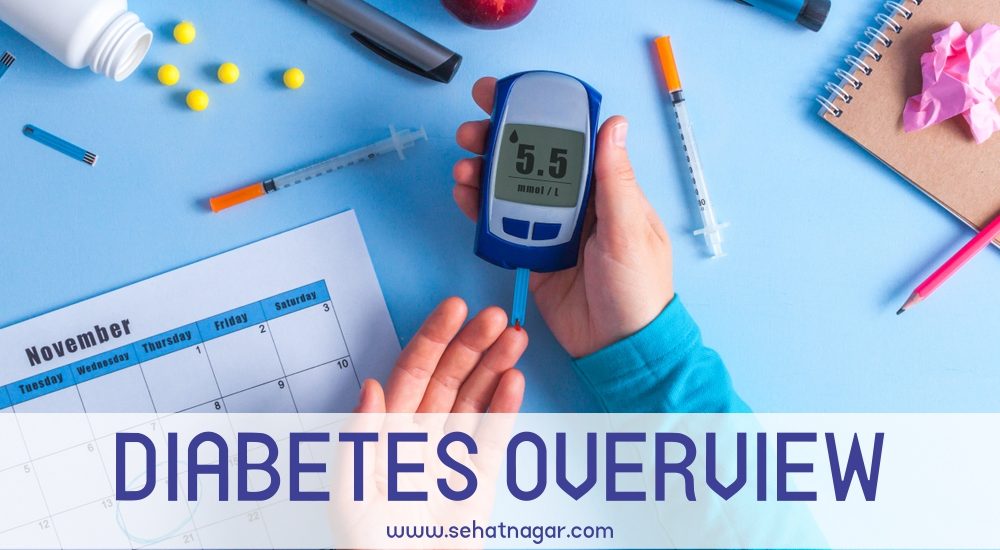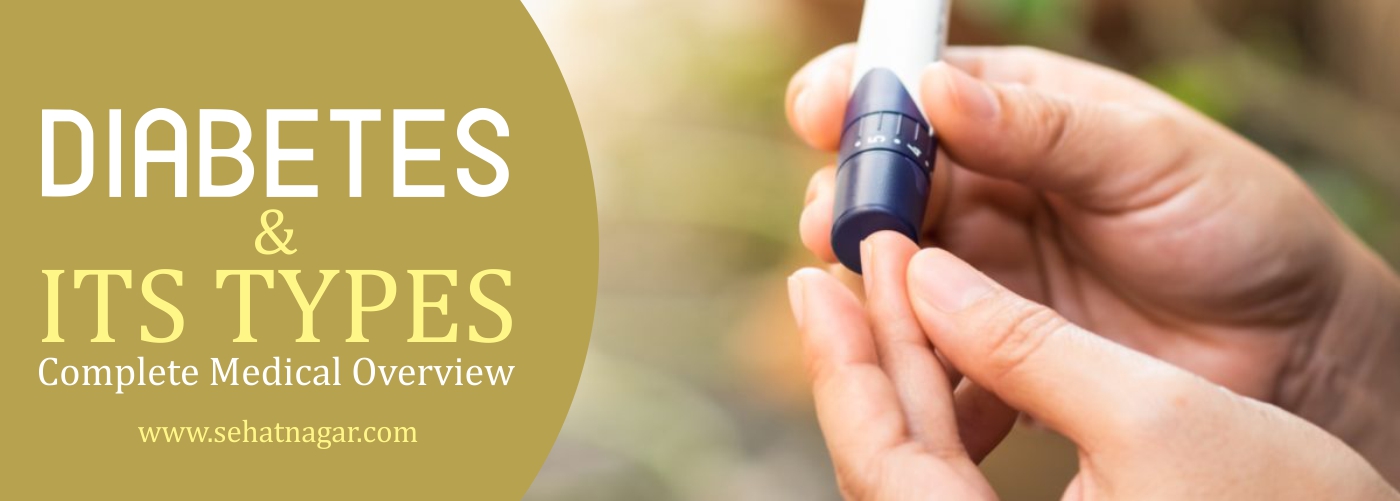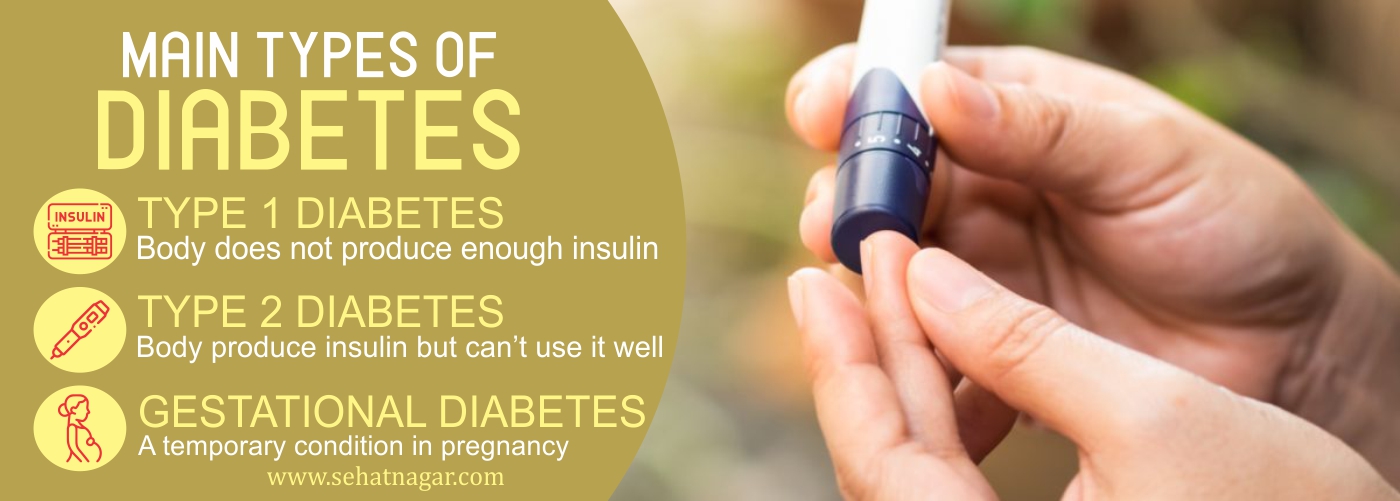

wordpress-seo domain was triggered too early. This is usually an indicator for some code in the plugin or theme running too early. Translations should be loaded at the init action or later. Please see Debugging in WordPress for more information. (This message was added in version 6.7.0.) in /home/sehatnagar.com/public_html/wp-includes/functions.php on line 6114
In this article we will see about diabetes awareness, types and also symptoms of Diabetes. Diabetes is a health condition that affects how your body processes sugar, also known as glucose. Normally, your body uses a hormone called insulin. It helps to move glucose from your bloodstream into your cells to use for energy. But with diabetes, your body either doesn’t make enough insulin or can’t use it properly. This cause glucose to build up in your blood. This can lead to various health problems, such as damage to your eyes, kidneys, nerves, and heart. However, there are different types of diabetes, including type 1, type 2, and gestational diabetes, and each type has different causes and risk factors. Treatment may involve lifestyle changes, medication, and monitoring your blood sugar levels.

If we talk about types of diabetes then there are three main types of Diabetes:
(Diabetes and its types)

The symptoms of diabetes can vary depending on the type of diabetes and how high the blood sugar levels are. Some common symptoms of diabetes include:
Caution: It’s important to note that some people with type 2 diabetes may not have any symptoms, or their symptoms may be mild and go unnoticed. This is why regular screening and monitoring of blood sugar levels is important, especially if you have risk factors for diabetes such as obesity, family history, or a sedentary lifestyle. If you are experiencing any of these symptoms, you should talk to your healthcare provider for an evaluation.
Some of the early symptoms of diabetes include:
It’s important to note that not everyone with diabetes will experience all of these symptoms, and some people may not have any symptoms at all. It’s also possible to have diabetes without any symptoms, so it’s important to get regular check-ups and blood sugar tests if you are at risk for developing diabetes. If you are experiencing any of these symptoms, or are concerned about your risk for diabetes, it’s best to speak with a healthcare professional.
The causes of diabetes symptoms can vary depending on the type of diabetes. Here are some of the main causes of each type:
Type 1 diabetes: This is caused by an autoimmune response in which the body’s immune system mistakenly attacks and destroys the cells in the pancreas that produce insulin. The exact cause of this autoimmune response is not fully understood, but genetics and environmental factors are believed to play a role.
Type 2 diabetes: This type of diabetes is caused by a combination of genetic and lifestyle factors. Being overweight or obese, having a sedentary lifestyle, and eating an unhealthy diet high in sugar and refined carbohydrates can increase the risk of developing type 2 diabetes. Genetics and family history can also increase the risk of type 2 diabetes.
Gestational diabetes: This type of diabetes is caused by hormonal changes that occur during pregnancy, which can lead to insulin resistance. Women who are overweight or obese, have a family history of diabetes, or have had gestational diabetes in a previous pregnancy are at a higher risk of developing gestational diabetes.
Other less common causes of diabetes include genetic conditions, such as monogenic diabetes, and medical conditions that affect the pancreas or other organs involved in insulin production and regulation. It’s important to note that while some risk factors for diabetes are beyond your control. Like as genetics, there are many lifestyle changes you can make to reduce your risk of developing diabetes, such as maintaining a healthy weight, eating a balanced diet, and being physically active.
Diabetes is a chronic medical condition that is classified into several different types based on various factors. The most common types of diabetes are:
The classification of diabetes is important for guiding treatment decisions and determining the risk of complications associated with the condition. It is important to work closely with a healthcare provider to develop a personalized management plan for diabetes based on the individual’s specific type and needs.
Diabetes is a chronic medical condition that can lead to a wide range of complications if not properly managed. Here are some of the most common complications associated with diabetes:
It is important for people with diabetes to work closely with a healthcare provider to manage their condition and prevent or minimize the risk of complications. This may include managing blood sugar levels through diet, exercise, and medication; managing blood pressure and cholesterol levels; and receiving regular check-ups and screenings.
There are several risk factors that can increase a person’s likelihood of developing diabetes. Some of the most common risk factors for diabetes include:
It is important to work closely with a healthcare provider to identify and manage any risk factors for diabetes. Lifestyle changes, such as maintaining a healthy weight, exercising regularly, and following a healthy diet, can help to reduce the risk of developing diabetes. In some cases, medication or insulin therapy may be necessary to manage the condition.